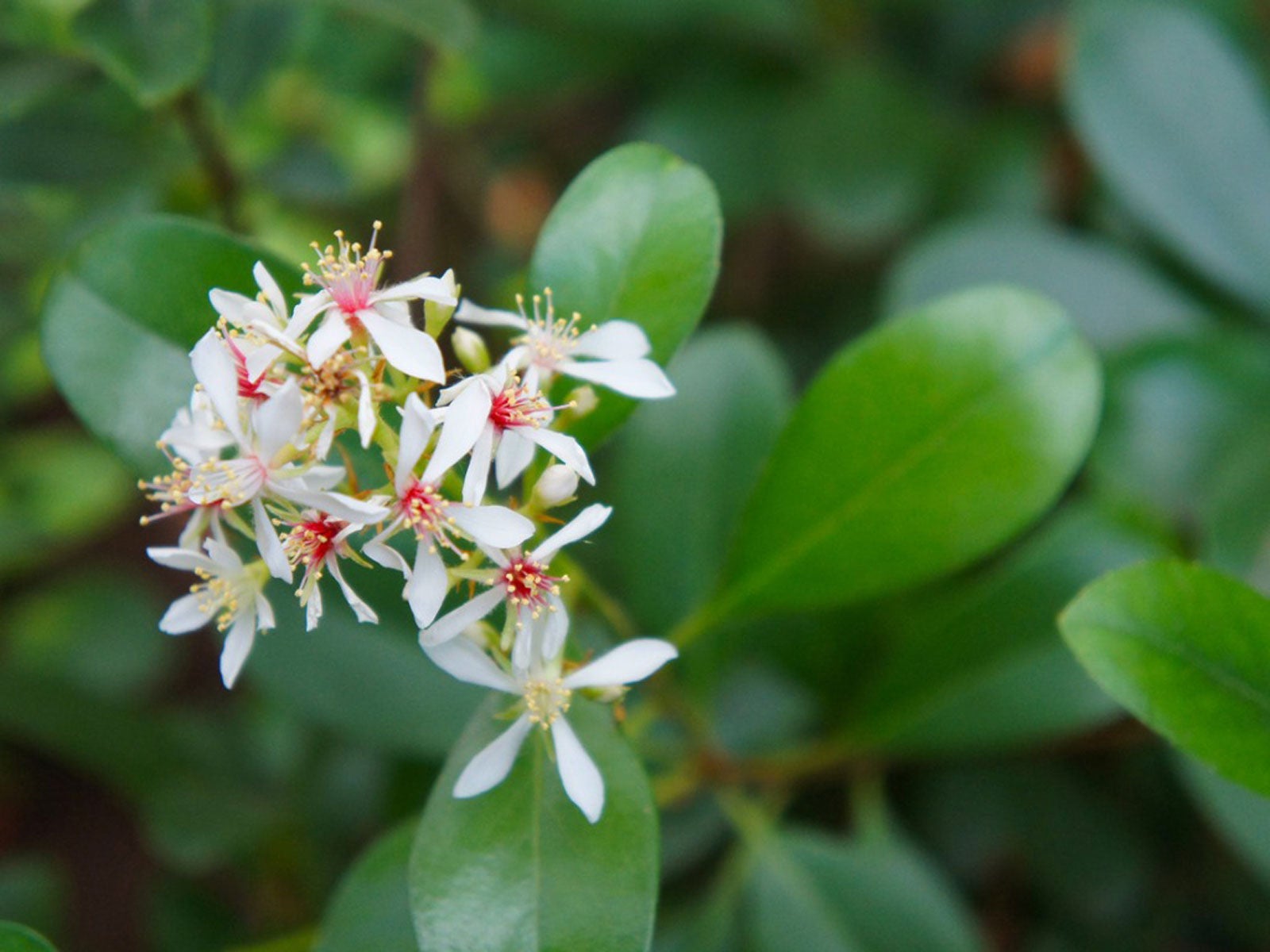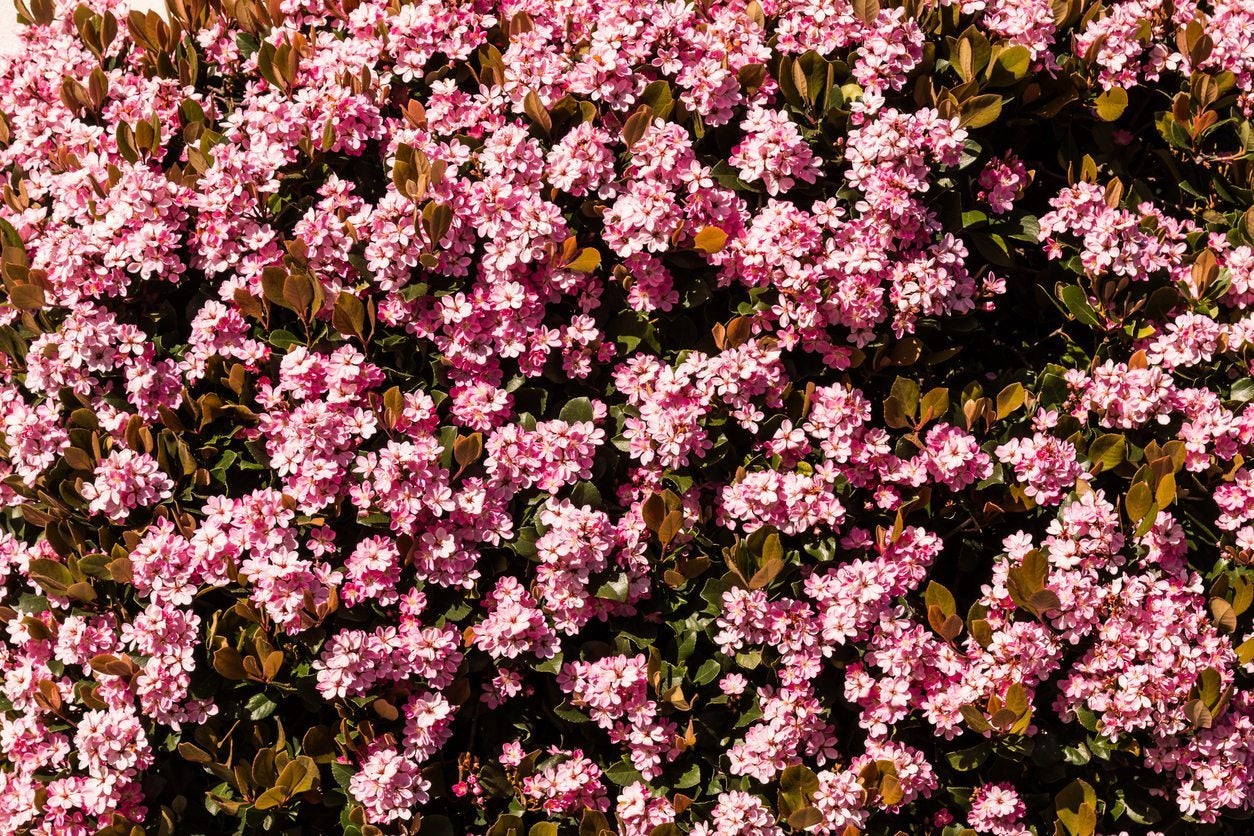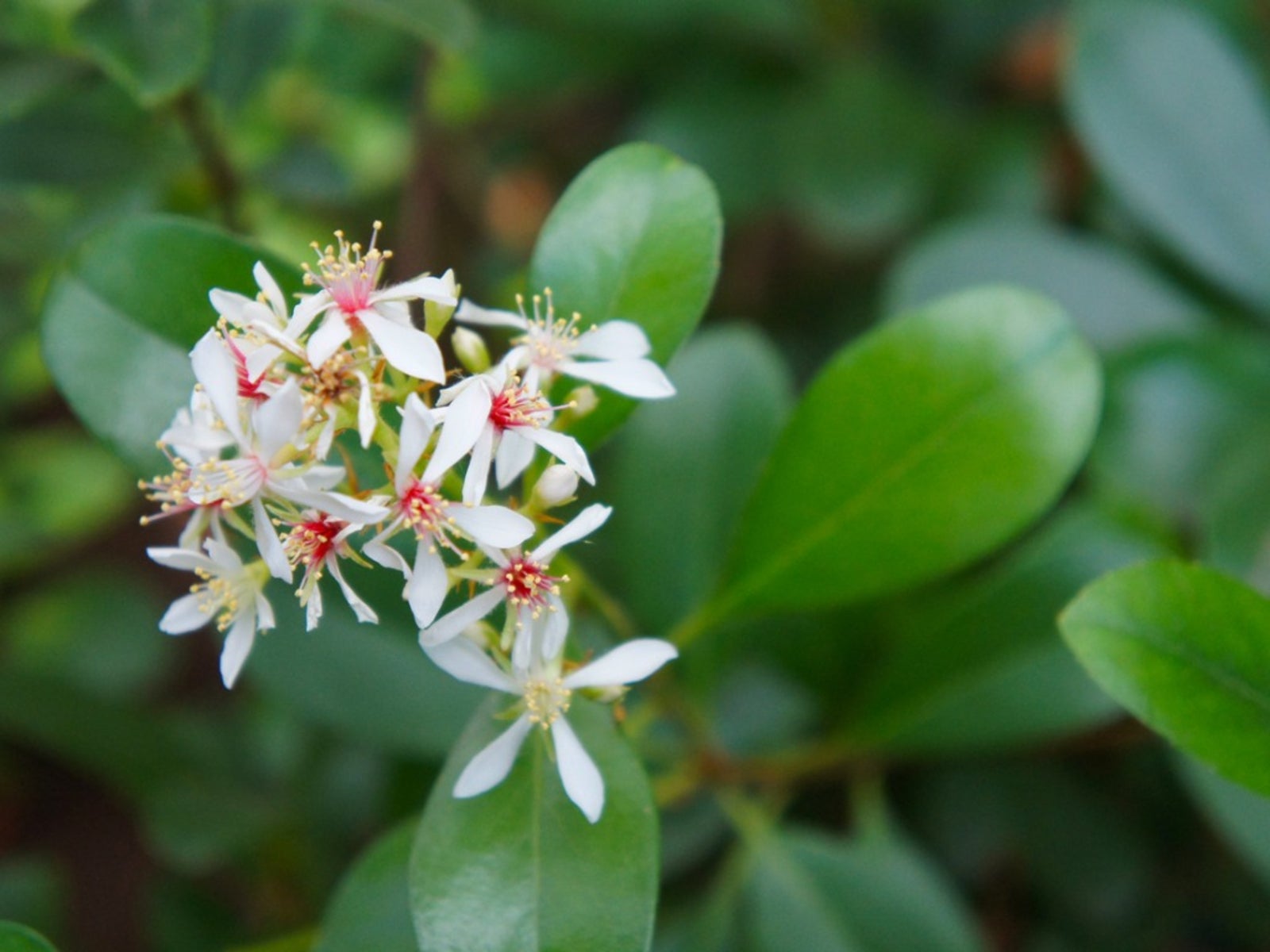Planting Indian Hawthorn: How To Care For Indian Hawthorn Shrubs


Indian hawthorn (Rhaphiolepsis indica) is a small, slow-growing shrub perfect for sunny locations. It's easy to care for because it keeps a neat, rounded shape naturally, without the need for pruning.
The shrub looks great year-round and becomes a focal point in spring when large, loose clusters of fragrant, pink or white flowers bloom. The flowers are followed by small blue berries that attract wildlife. Read on to find out how to grow Indian hawthorn.
How to Grow Indian Hawthorn
Indian hawthorn is an evergreen, so the dark green, leathery foliage remains on the branches all year, taking on a purplish color in winter. The shrub survives winters in mild climates and is rated for USDA plant hardiness zones 8 through 11. You'll find many uses for Indian hawthorn plants. Planted close together, they form a dense hedge.
You can also use rows of Indian hawthorn as barriers or dividers between sections of the garden. The plants tolerate salt spray and salty soil, so they are ideal for seaside planting. Indian hawthorn plants grow well in containers, so you can use them on patios, decks, and porches too. Indian hawthorn care begins with planting the shrub in a location where it can thrive. It grows best in full sun but will tolerate afternoon shade as well.
Planting Indian hawthorn where it receives too much shade causes the shrub to lose its neat, compact growth habit. It isn't picky about the soil, but it's a good idea to work in some compost before planting if the soil is heavy clay or sand.
The various species and cultivars grow between 3 and 6 feet (1-2 m.) wide and spread a little further than their height, so space them accordingly.
Care for Indian Hawthorn Shrubs
Water newly planted Indian hawthorn shrubs regularly to keep the soil moist until they are well-established and begin putting on new foliage. Once established, Indian hawthorn tolerates moderate drought.
Gardening tips, videos, info and more delivered right to your inbox!
Sign up for the Gardening Know How newsletter today and receive a free copy of our e-book "How to Grow Delicious Tomatoes".
Fertilize the shrub for the first time in spring of the year after planting, and every spring and fall thereafter. Feed the shrub lightly with a general purpose fertilizer. Indian hawthorn almost never needs pruning.
You may need to prune lightly to remove dead and damaged branches, and you can do this type of pruning any time of year. If the shrub needs additional pruning, do so immediately after the flowers fade.

Jackie Carroll has written over 500 articles for Gardening Know How on a wide range of topics.
-
 4 Superfast Composting Methods: Turn Waste Into Garden Gold In 30 Days Or Less
4 Superfast Composting Methods: Turn Waste Into Garden Gold In 30 Days Or LessTry the fastest composting methods to turbocharge your pile and transform kitchen scraps and garden waste into finished compost in just a few weeks.
By Mary Ellen Ellis
-
 Best Spider Plant Soil – Complete Soil Guide And Expert Tips For Keeping Plants Happy
Best Spider Plant Soil – Complete Soil Guide And Expert Tips For Keeping Plants HappySpider plants are fun and easy plants to grow, but what is the best soil for a spider plant? Selecting the right soil is important so they can thrive.
By Bonnie L. Grant
-
 Moving Indian Hawthorn Shrubs – How To Transplant An Indian Hawthorn
Moving Indian Hawthorn Shrubs – How To Transplant An Indian HawthornIf you are thinking about transplanting Indian hawthorn plants, you'll want to read up about proper technique and timing. For information on how and when to transplant Indian hawthorn and other tips on transplanting Indian hawthorn, click here.
By Teo Spengler
-
 Indian Hawthorn Pruning: How And When To Cut Indian Hawthorn Plants
Indian Hawthorn Pruning: How And When To Cut Indian Hawthorn PlantsOne of the features that make Indian hawthorn plants so easy to grow is that they rarely need pruning. Read this article to find out how to prune an Indian hawthorn.
By Jackie Carroll